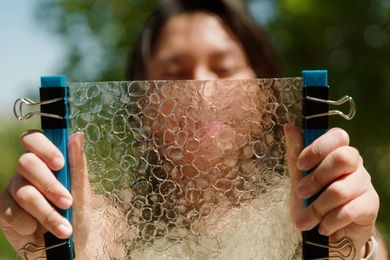The Massachusetts Institute of Technology was founded in 1861 by William Barton Rogers, a geologist from Virginia, as a new kind of educational institution designed to aid "the development and practical application of science in connection with arts, agriculture, manufactures and commerce." Classes began in Boston in 1865, and the first building was constructed on Boylston Street near the corner of Berkeley Street. In 1916, MIT moved to its newly constructed campus on the Cambridge side of the Charles River. The land acquisition and building construction were made possible by the generous gifts of industry giants T. C. du Pont, Class of 1884, and George Eastman. The campus now covers 154 acres.
Students (Spring 1999)
9,885 (undergraduate, 4,372; graduate, 5,513); from all 50 states, the District of Columbia, three territories, and 102 foreign countries.
Women are 41 percent of undergraduates (1,776) and 26% (1,426 ) of the graduate students.
US minority groups (Native American, Asian American, African American, Hispanic American): 2,600 (undergraduate, 2,009 [46%]; graduate, 591 [11%].
Non-US students: 2,255 (undergraduate, 344 [8%]; graduate, 1,911 [35%].
Schools and Major Units
There are five schools: School of Architecture and Planning, School of Engineering, School of Humanities and Social Science, Sloan School of Management, and School of Science.
Other major units include the Whitaker College of Health Sciences and Technology and more than 60 major interdisciplinary laboratories, centers and programs (these include the Artificial Intelligence Laboratory, the Center for Cancer Research, and the Energy Laboratory).
Faculty
Professors of all ranks: 923. The faculty includes 141 women, and 122 persons who are members of US minority groups (78 Asian Americans, 25 African Americans, 18 Hispanic Americans and one Native American). The Institute's total teaching staff of almost 1,300 individuals includes Professors, Senior Lecturers, Lecturers, Professors Emeriti, Instructors, Adjunct Faculty, and Teaching Assistants.
Nobel Laureates and Faculty Honors
Thirty-five faculty, former faculty, staff, alumni, and researchers have won the Nobel Prize. Currently, ten members of the MIT faculty (active and emeriti) and an MIT physician are Nobel laureates. Other faculty honors (active and emeriti): American Academy of Arts and Sciences, 210; National Academy of Engineering, 104; National Academy of Sciences, 102; Institute of Medicine, 24. In addition 21 past and present members of the MIT faculty have received National Medals of Science and Technology.
Employees
MIT employs about 8,200 persons on campus, and another 2,200 people at the MIT Lincoln Laboratory in Bedford, MA, a federally-funded research and development center operated for the government.
Alumni
MIT has more than 90,000 living alumni.
Admissions Data
Undergraduate: 8,250 applications for the 1998 freshman class; 1,890 (23%) applicants offered admission; 1,043 enrolled.
Graduate (1998): 12,098 applications; 2,651 applicants offered admission; 1,392 enrolled.
Undergraduate Tuition
$24,050 (1998-99). Approximately 60 percent of MIT's undergraduates receive financial aid. In 1998-99, the average grant awarded to students who were eligible for aid was $15,320.
Undergraduate Majors*
Engineering, 2,063; Science, 822; Humanities and Social Science, 145; Management, 172; Architecture and Planning, 80.
*MIT students do not choose a major until sophomore year.
Research
Past research achievements include:
the creation of modern food preservation processes
the first chemical synthesis of penicillin and Vitamin A
the development of modern technologies for artificial limbs
the development of high-speed photography
Within the last five years, MIT researchers have:
developed a microchip that can store and release chemicals on demand
located the gene defect responsible for myotonic dystrophy, the most frequent form of muscular dystrophy, and identified the nature of the mutation
fabricated a single-electron transistor
developed a new optical technique to measure galaxy distances with unprecedented accuracy and reliability
Five Major Research Sponsors FY 1998
Industry, $74.1 million (19.2%); US Department of Energy, $70.3 million (18.2%); US Department of Defense, $64.8 million (16.8%); US Department of Health and Human Services, $58.9 million (15.3%); NASA, $30.2 million (7.8%).
Economic Impact
MIT routinely leads all US universities in patents granted, with more than 100 a year. MIT signs about 70 license agreements with private companies each year. In the first national study of the ecomomic impact of a research university, the BankBoston Economics Department issued a report in 1997, stating that MIT graduates and faculty have founded 4,000 firms which employ at least 1.1. million people generated $232 billion of sales in 1994.The firms, 90 percent of which have been founded since World War II, had more than 8,500 plants and offices in the 50 states and employed one out of 170 Americans. The BankBoston report, "MIT: The Impact of Innovation," noted that if the companies formed a nation, they would have ranked as the 24th largest world economy that year. The report said the $232 billion in world sales is roughly equal to a gross domestic product of $116 billion, which was a little less than the GDP of South Africa and more than the GDP of Thailand."
Libraries
10 units containing more than 2.5 million volumes, more than 18,000 serial titles and more than 50 databases.





